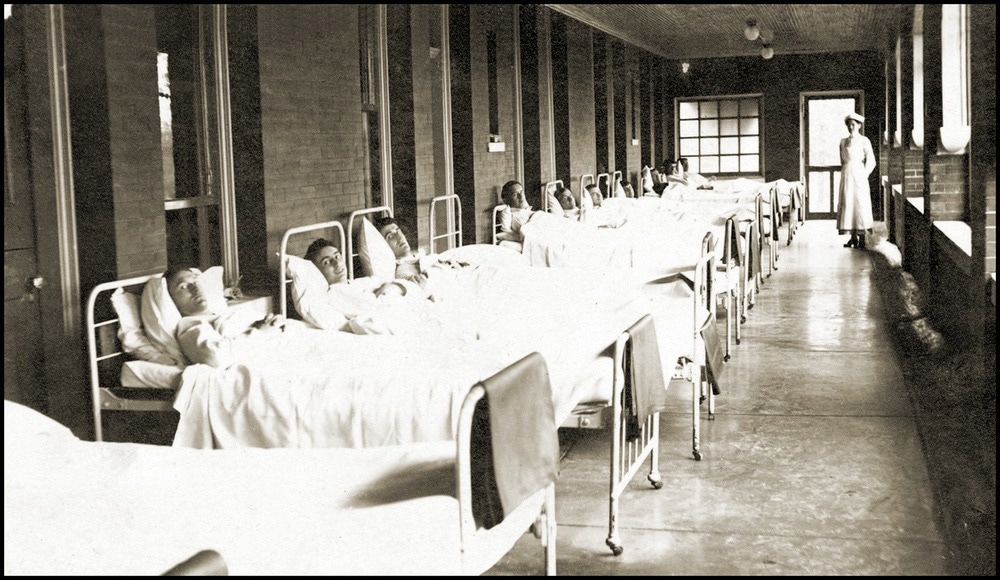How did society treat women in medicine in the past?
Key contributions of women in medicine and research
Gender diversity and balance in medicine
Strategies to encourage more females to pursue careers in medicine and research
References
Further reading
For many years, there have been discussions and debates on the presence of women in medicine. The recent increase in the number of women in the field of medicine and the change in gender composition stems from the contribution of many women in the past two centuries. This article is focused on the important contribution of women in medicine and how it has impacted society's outlook.

How did society treat women in medicine in the past?
The role of women in medicine and healing has been traced back to several centuries ago. Women were not allowed to enter medical schools in many countries, including the United Kingdom, until the late nineteenth century. Historically, only the rich could afford university-trained medical practitioners for treatment, while others sought help from female healers who were called 'wise women' or sometimes 'witches.'1
The knowledge of herbal remedies was passed down from generation to generation and was often practiced by female healers.2 Historically, the practice of herbal medicine was opposed by the church because it felt that the medicinal benefits would demean the power of prayers. Furthermore, it would decrease the value of medical licenses that were issued by the church to university-trained doctors. Women as healers were not looked upon favorably, and witch-hunting was encouraged throughout Europe.3
Disrupting the Flow: Dr. Naseri's Revolutionary Approach to Empowering Women's Health
During this period, midwifery was the only clinical position that was allowed for women to practice as it had a lower status than male medical practitioners. Interestingly, to enter the male-dominated workforce, many females disguised themselves as men. As an example, Dr. James (Miranda) Barry, whose medical career as a physician spanned several decades, was known to be a woman only after she died in 1865.4
The outlook of having women in medicine changed in the nineteenth century with greater progress in science and technology. In the UK, the wave of feminism resulted in the approval of the 'Enabling Act' in 1875, which theoretically allowed British Universities to grant medical licenses to women.2

Vintage photo of a Hospital Hallway Lined With Men In Beds. Image Credit: chippix/Shutterstock.com
Key contributions of women in medicine and research
Many women enrolled to study medicine in the early twentieth century after medical schools that catered exclusively to women were established. Some of the latest and historical contributions of women in the field of medicine are discussed below:
Rebecca Lee Crumpler (1831-1895)
Rebecca Lee Crumpler was the first African American woman to earn an MD degree in the United States of America. She worked as a nurse for eight years and consequently gained admission to the New England Female Medical College in Boston. She completed her education in 1864 and became the first black woman to graduate from the school.5
Susie King Taylor (1848-1912)
Susie King Taylor was born into slavery and secretly attended a school where she learned how to read and write. During the Civil War, she volunteered for the Army's first Black regiment, where she became the first black army nurse. Taylor opened the first school for black students in Georgia after the war.6
Kadambini Ganguli (1861–1923)
She was the woman of many firsts. Ganguli was the first woman graduate of India and the first Indian woman physician to graduate and practice Western medicine. She overcame many societal obstacles and pursued further medical studies in the United Kingdom. Upon completion of her degree, she returned to India and practiced medicine.7
Gerty Cori (1896-1957)
She was the first woman to win the Nobel Prize in physiology or medicine. Grety Cori emigrated to the US from Prague after completing a doctorate in medicine. She researched how the human body processes sugar and produces insulin and hormones. Cori later joined Washington University in St. Louis as a professor of biochemistry.8
Virginia Apgar (1909-1974)
She was the first director of Columbia-Presbyterian Hospital's anesthesia department in 1938. Even though Virginia Apgar studied anesthesiology, she continued to explore the effects of labor, and delivery on a newborn's health. At present, a child's Apgar score is considered the gold standard to determine the health of the newborn. In her 50s, she focussed on the ways to prevent birth defects.9
Tu Youyou (1930-)
Tu Youyou is an eminent Chinese scientist and phytochemist who isolated the antimalarial component qinghaosu, later renamed artemisinin, a leading anti-malarial drug. She won the Nobel Prize for Physiology or Medicine in 2015 for her medicinal discoveries.10
Patricia Bath (1942-2019)
Patricia Bath was a humanitarian and ophthalmologist from the USA who invented the Laserphaco Probe for cataract treatment. She was the first African-American female doctor to be awarded a medical patent.11
Maria Elena Bottazzi (1966-)
Maria Elena Bottazzi is continuing her work to develop vaccines for neglected tropical diseases such as Chagas, hookworm, leishmaniasis, and schistosomiasis. Although these diseases can be fatal, they are not paid much attention to in developed countries. Bottazzi's research aims to change this thought process and save the poorest population from these tropical diseases through vaccination.12
Gender diversity and balance in medicine
In recent years, the number of female medical students has outnumbered males in many countries. Gender differences are more significant in part-time working arrangements, perhaps because the flexibility attracts female doctors more. Currently, the average hours worked by female doctors in the UK is increasing gradually.
Interestingly, the number of female and male doctors choosing to work full-time instead of part-time has also increased substantially. It has been observed that for female doctors, spousal support for childcare and domestic responsibilities is an important factor in their career progression.
The history of women in medicine
In comparison to men, more female doctors choose pediatrics and psychiatry as their specialty. Furthermore, they are also inclined to pursue obstetrics and gynecology. In the UK, the choice of specialization also depends on the training route, job security, and stability. In the US, less than 15% of practicing gastroenterologists are female.
It has been observed that many female patients prefer to be treated by female doctors. This preference highlights the need for a gender-balanced workforce in medicine. In terms of training and self-development, it has been observed that women doctors attend national conferences much less frequently than their male colleagues.
The lack of interaction between female practitioners and the biomedical industry was prominently noted through the design of endoscopic devices. These devices are not designed for women's relatively smaller hands, which increases their risk of musculoskeletal injuries compared to their male colleagues.13
Strategies to encourage more females to pursue careers in medicine and research
It has been proposed that grant-making organizations could allow certain funds to pay for eldercare, childcare, or other family-related expenses. This would encourage participants to travel and attend scientific conferences and meetings.
Gender-neutral award programs for primary caregivers permit "extra hands" funding opportunities. This funding scheme allows newly independent young investigators, who are also primary caregivers, to employ technicians, postdoctoral fellows, or administrative assistants to carry out experimental work more efficiently.
Education could be used as a tool to combat the difficulties faced by the female workforce in medicine and research. All institutions must conduct gender awareness training as part of medical and doctoral/post-doctoral orientations. These training programs are expected to raise awareness and help mitigate gender disparities.
References
- Walling A, Nilsen K, Templeton KJ. The Only Woman in the Room: Oral Histories of Senior Women Physicians in a Midwestern City. Womens Health Rep (New Rochelle). 2020;1(1):279-286.
- Jefferson L, Bloor K, Maynard A. Women in medicine: Historical perspectives and recent trends. British Medical Bulletin. 2015; 114(1), 5-15.
- Minkowsli LM. Women Healers of the Middle Ages: Selected Aspects of Their History. American Journal of Public Health. 1992; 82(2).
- Hurwitz B, Richardson, R. Inspector General James Barry MD: putting the woman in her place. Br Med J. 1989; 298:299
- Britannica, T. Editors of Encyclopaedia (2024, January 1). Rebecca Lee Crumpler. Encyclopedia Britannica. https://www.britannica.com/biography/Rebecca-Lee-Crumpler
- Butchart RE. Susie King Taylor. New Georgia Encyclopedia. 2023;
- Mukherjee, S. Women and medicine in colonial india: a case study of three women doctors. Proceedings of the Indian History Congress.2005; 66, 1183–93. http://www.jstor.org/stable/44145930.
- Nicola, L. Gerty, the first female winner of the Nobel Prize in Medicine. https://www.ibsafoundation.org/en/blog/gerty-the-first-female-winner-of-the-nobel-prize. 2020; Assessed on February 20, 2024.
- Oliveira, DRC. The legacy of Virginia Apgar. British Journal of Anesthesia. 2020; 124,3.
- Liu W, Liu Y. Youyou Tu: significance of winning the 2015 Nobel Prize in Physiology or Medicine. Cardiovasc Diagn Ther. 2016;6(1):1-2. doi:10.3978/j.issn.2223-3652.2015.12.11
- Kermode-Scott B. Patricia Bath: ophthalmologist, inventor, and humanitarian. BMJ. 2019; 366.
- Bottazzi ME, Hotez PJ. "Running the Gauntlet": Formidable challenges in advancing neglected tropical diseases vaccines from development through licensure, and a "Call to Action". Hum Vaccin Immunother. 2019;15(10):2235-2242. doi:10.1080/21645515.2019.1629254
- Noronha B, Fuchs A, Zdravkovic M, Berger-Estilita J. Gender balance in the medical workplace – A snapshot into anesthesia. Trends Anaesth Crit Care, 2022; 43, 4-10.
- Allan, MJ, et al. Five Strategies Leaders in Academic Medicine Can Implement Now to Enhance Gender Equity. J Med Internet Res. 2023;25:e47933
Further Reading
Last Updated: Mar 6, 2024